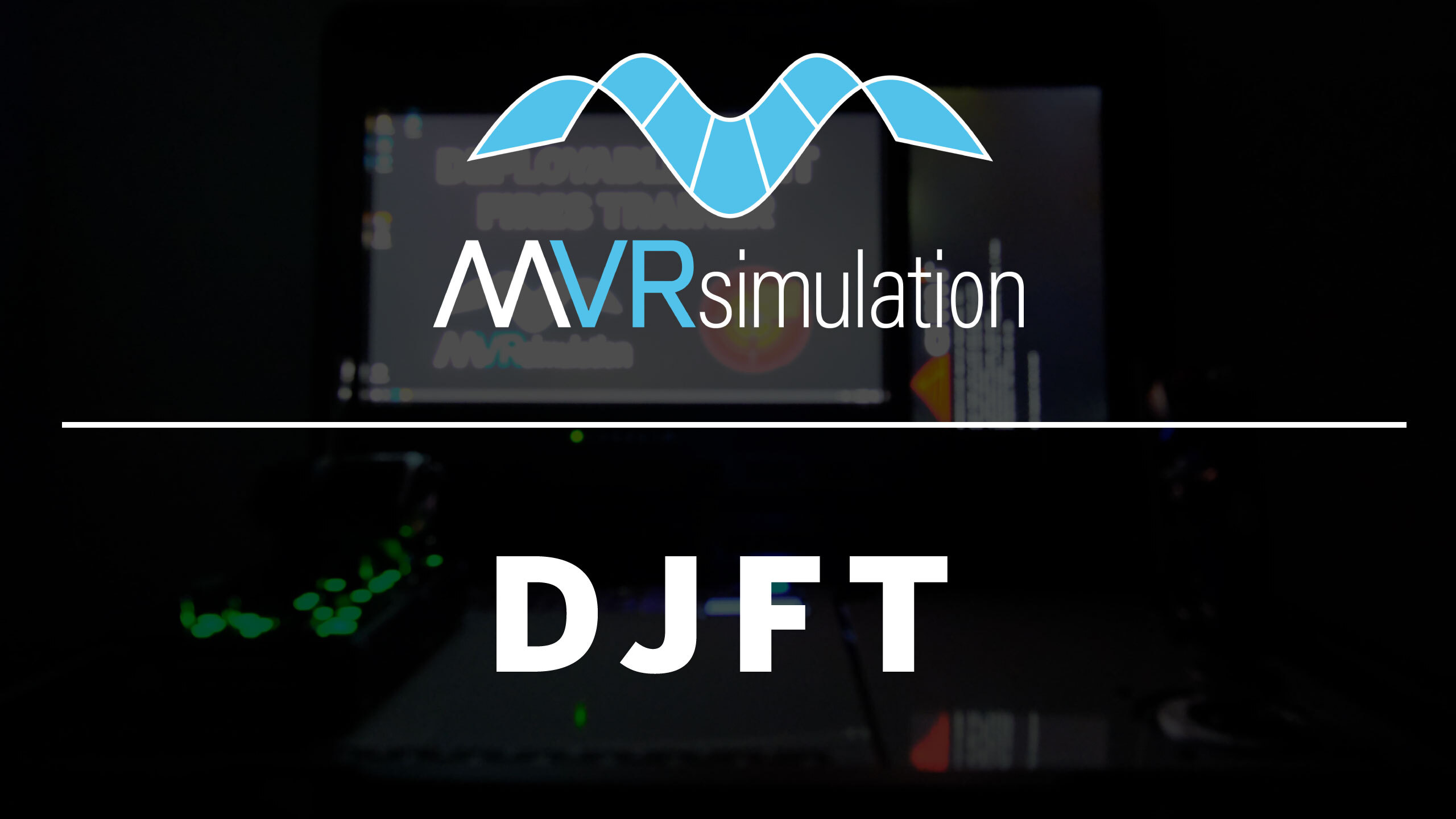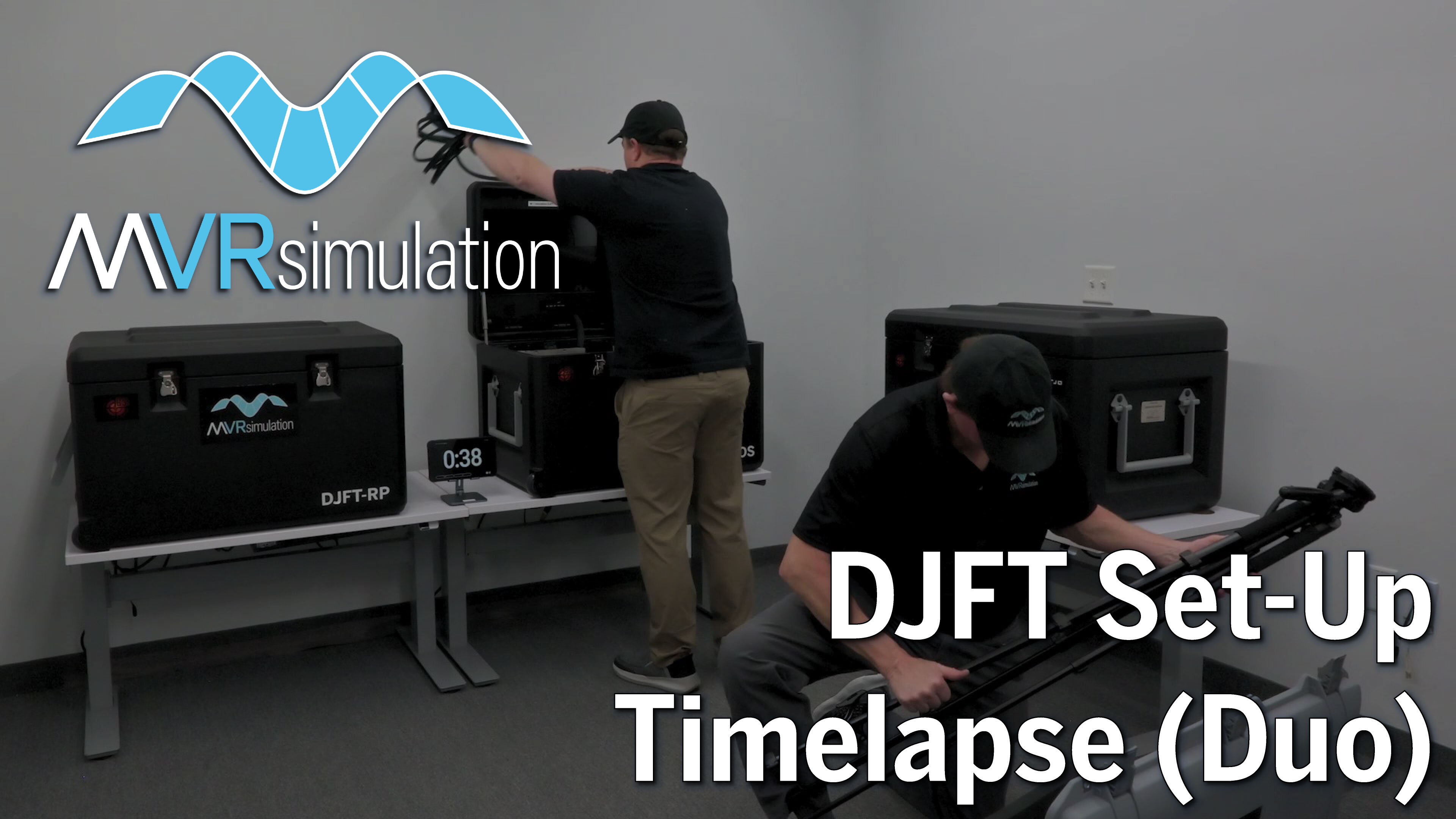Deployable Joint Fires Trainer (DJFT)
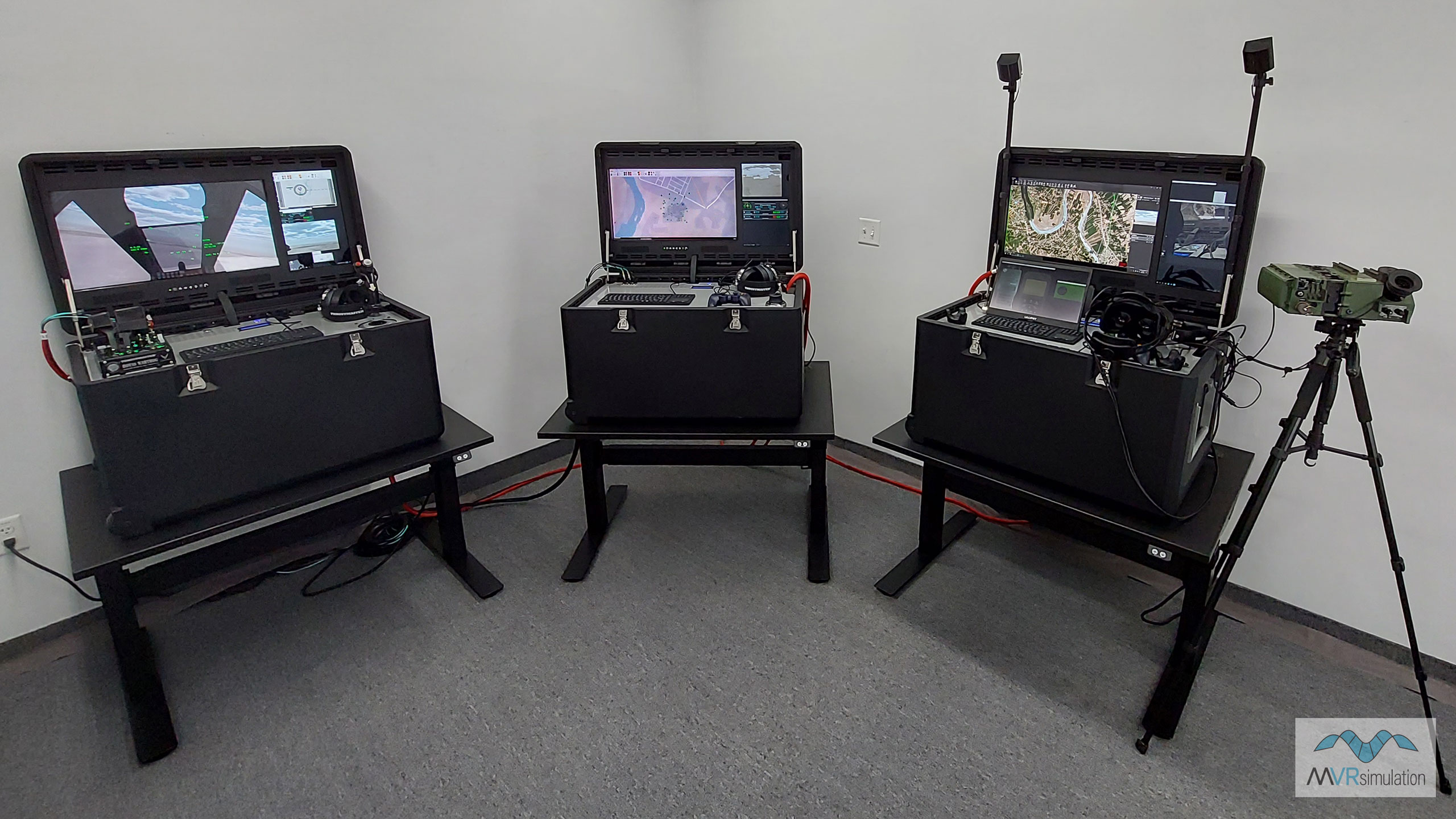
The full DJFT is comprised of three self-contained, deployable stations packaged in custom-built welded aluminum cases.
MVRsimulation’s Deployable Joint Fires Trainer (DJFT) is a mixed-reality simulator designed to provide a deployable capability for Joint Terminal Attack Controllers (JTACs) and Forward Observers (FOs) to train alongside fixed-wing, rotary-wing and RPAS aircrew within a fully immersive, joint training environment.
The DJFT is fully accredited by the Joint Fire Support Executive Steering Committee (JFS ESC) for Type, 1, 2, and 3 Terminal Attack Control (TAC), Bomb on Coordinate (BOC), Fixed-Wing (FW), Rotary-Wing (RW), Remote Observer (RO), Video Down-Link (VDL), Suppression of Enemy Air Defenses (SEAD), Urban, Forward Air Controller (Airborne) (FAC (A)), Night, IR, and Laser controls.
The internally designed modular plug-and-play DJFT is comprised of three or more stations fully contained within two-man portable welded aluminum cases. Integrated with the TAA-compliant Varjo Secure Edition mixed-reality headset with offline license, the DJFT contains all the hardware and software required to run dynamic, full-spectrum JTAC/Joint Fires training scenarios, including all computers, MVRsimulation’s round-earth terrain server, emulated physical Laser Target Designator (LTD) and IZLID, simulated GPS receiver and communication devices. Scenarios are run on Battlespace Simulations’ Modern Air Combat Environment (MACE) and MVRsimulation’s Virtual Reality Scene Generator (VRSG).
The DJFT ecosystem can now be expanded right to the tactical edge with the Portable Joint Fires Trainer (PJFT), now available as a stand alone portable trainer or as an optional add-on to the DJFT. Units can run the DJFT and PJFT at deployed locations and take the PJFT while on temporary duty assignment (TDY) training exercises. Training scenarios can be replicated between the DJFT and PJFT. Missions run on the PJFT can be assessed for after action review on the DJFT, giving a fully flexible training capability wherever and whenever required. Additionally, the PJFT can be added to the DJFT to support additional role players for training efforts where more participants are desired.
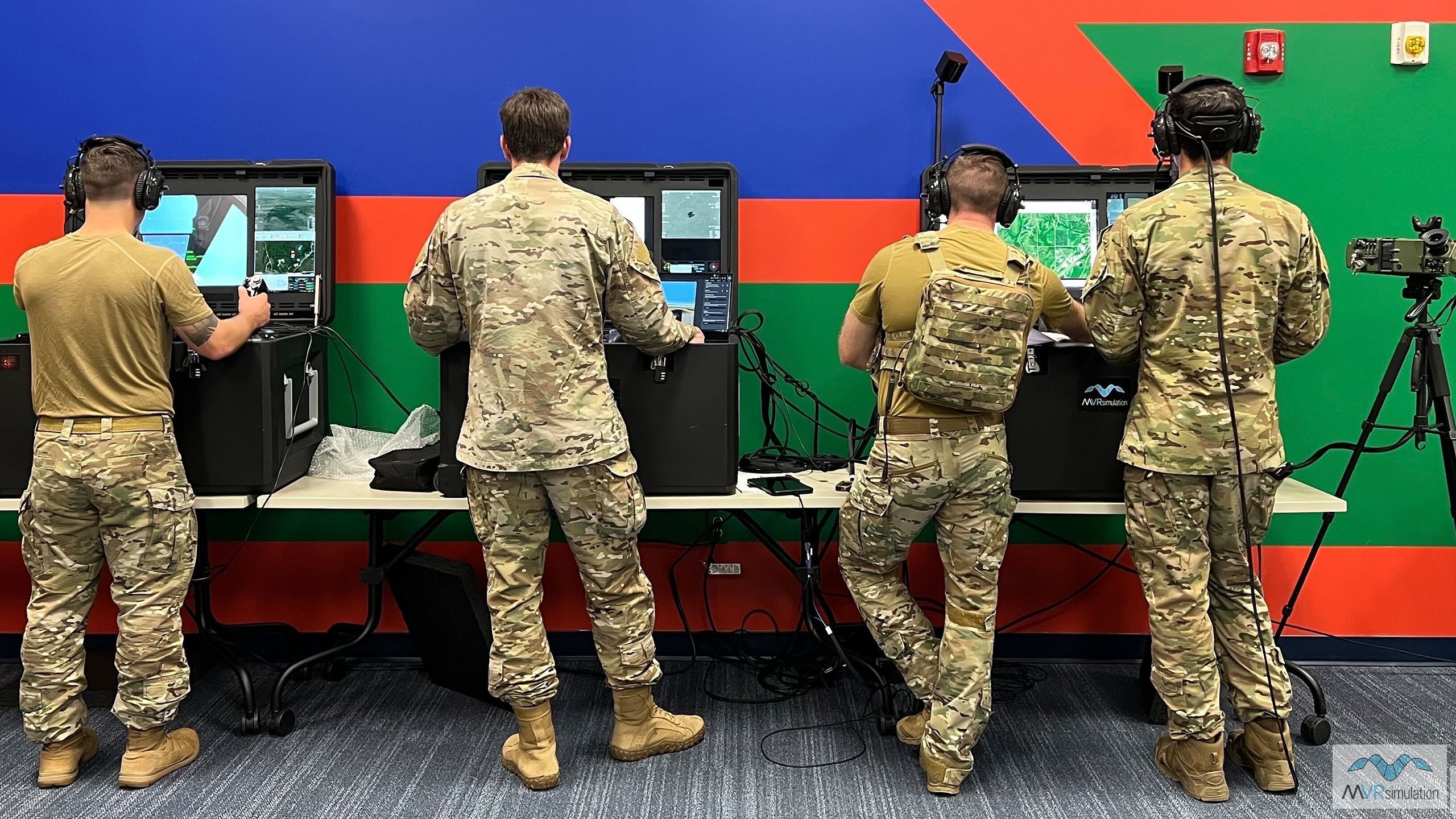
The Deployable Joint Fires Trainer (DJFT) provides a fully-deployable mixed-reality Joint Fires/JTAC training capability.
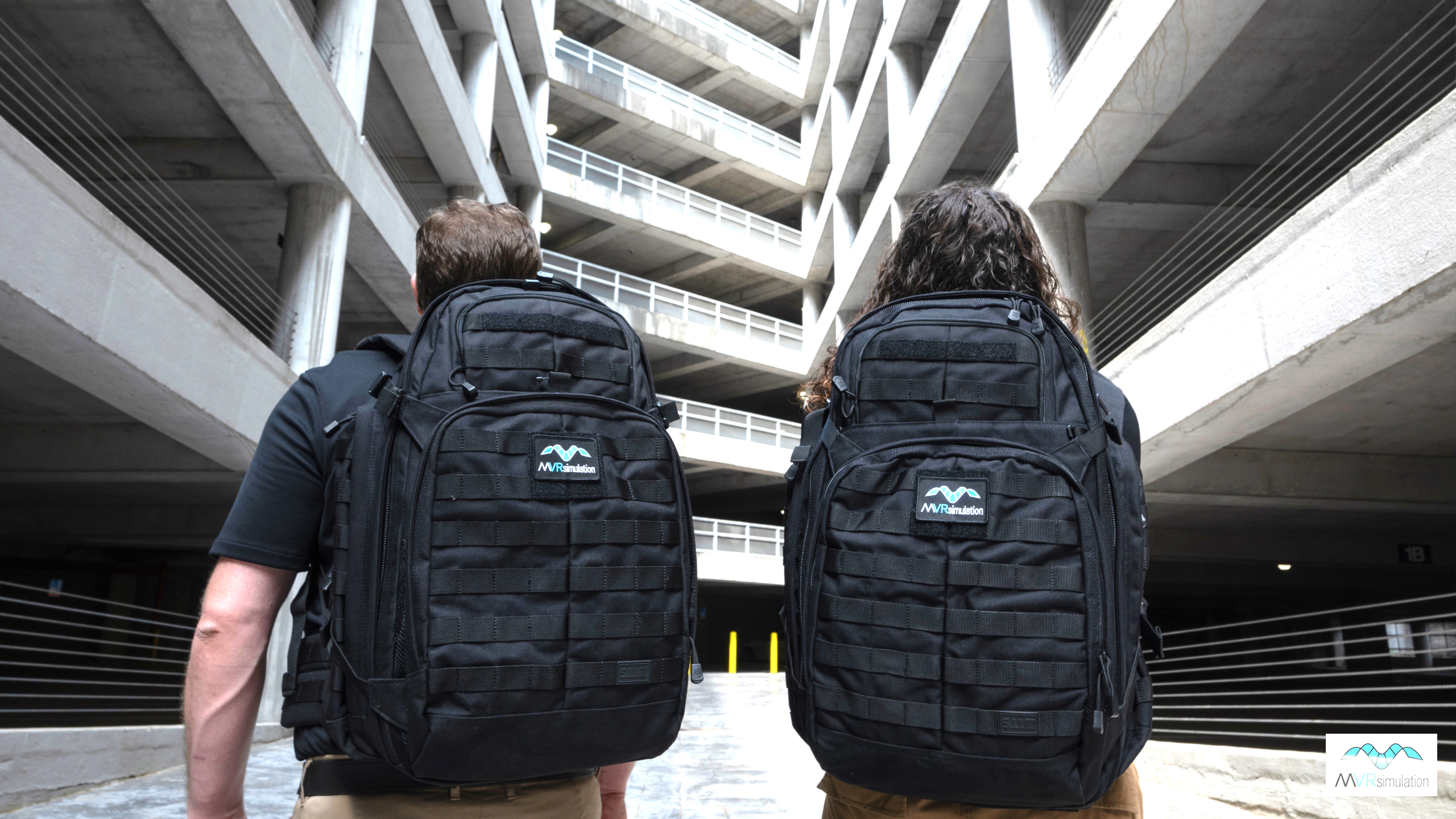
The DJFT ecosystem can be expanded to the tactical edge with the addition of the Portable Joint Fires Trainer (PJFT).
DACAS-capable
The DJFT supports datalink messaging to execute Link 16 and VMF Digitally Aided Close Air Support (DACAS) in accordance with current joint tactics, techniques, and procedures. It has been integrated and successfully tested with battlefield targeting and communication hardware and software, including the Android Tactical Awareness Kit (ATAK) and its equivalent for the windows operating system, WinTAK.
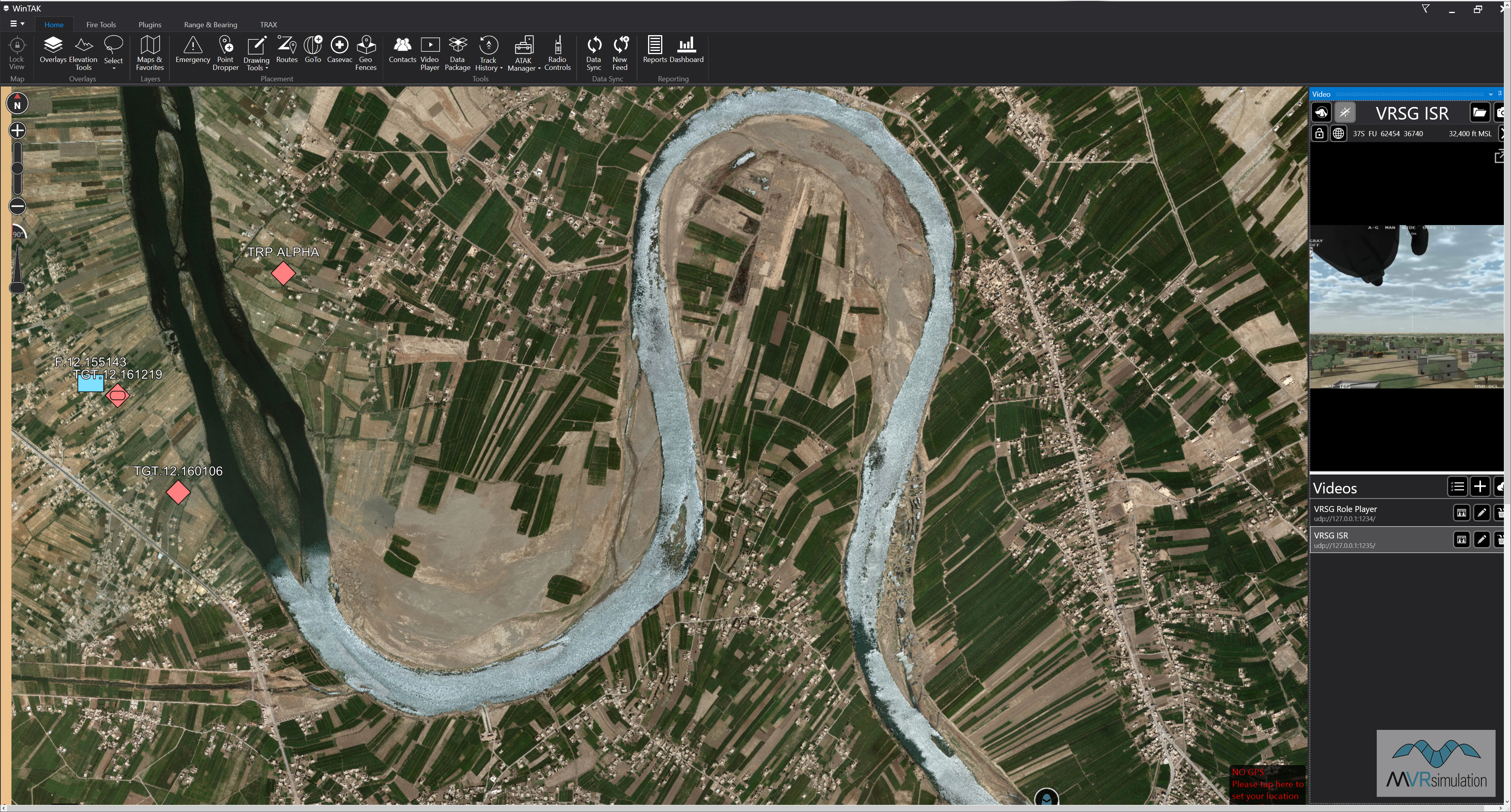
Close-up of WinTAK in real time integrated VRSG's 3D geospecific terrain; including simulated sensor feed from the Role Player.
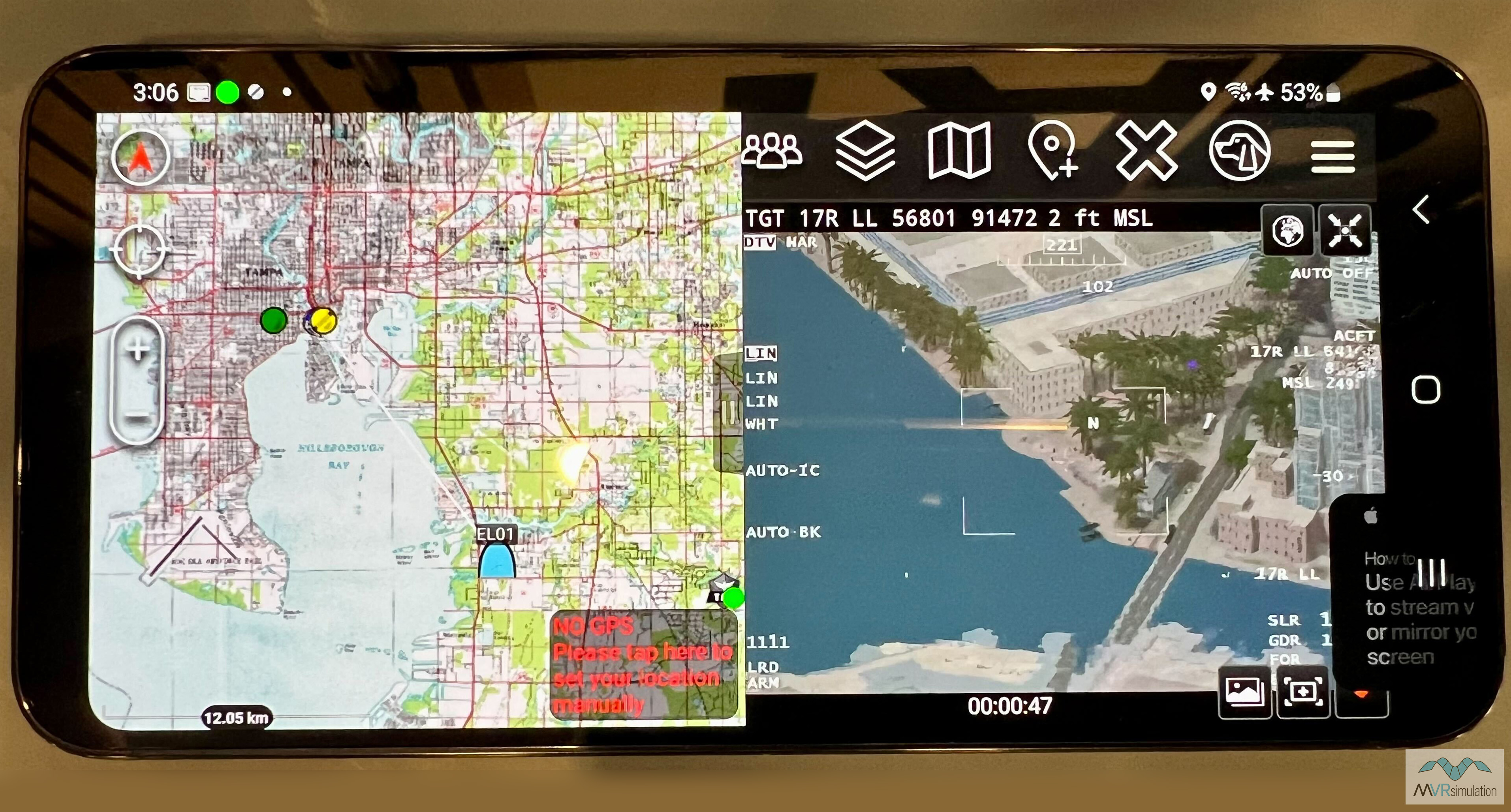
Simulated Special Operations Forces training mission showing VRSG and BSI's MACE integrated on handheld TAK device.
Observer Station
- Integrated Varjo mixed-reality head mounted display allows the user to be fully immersed in the virtual world while interacting with emulated physical LTD and IZLID in the real world.
- Form-fit-function emulated equipment:
- Type 163
- IZLID 1000P
- Optional: SOFLAM
- Other emulated equipment available upon request
- Notional simulated equipment:
- MIL tape HUD in the HMD, can be configured to degrees if preferred
- PRC-117G or PRC-152 radio
- Simulated Advanced GPS Receiver (DAGR)
- Additional equipment available upon request
- Communicate with other players as an observer via multi-channel, simulated radios with encryption
- External speakers for environmental sound
- Samsung S23 Tactical Edition end user device ready for ATAK/WinTAK integration for Link 16 and VMF Digitally Aided CAS (DACAS)
- Add additional Observer stations to support specific user training requirements
- Connect into existing simulators for joint training
- MVRsimulation's Portable Joint Fires Trainer (PJFT) JTAC Backpack can join scenarios as fully-networked additional Observers (available seperately)
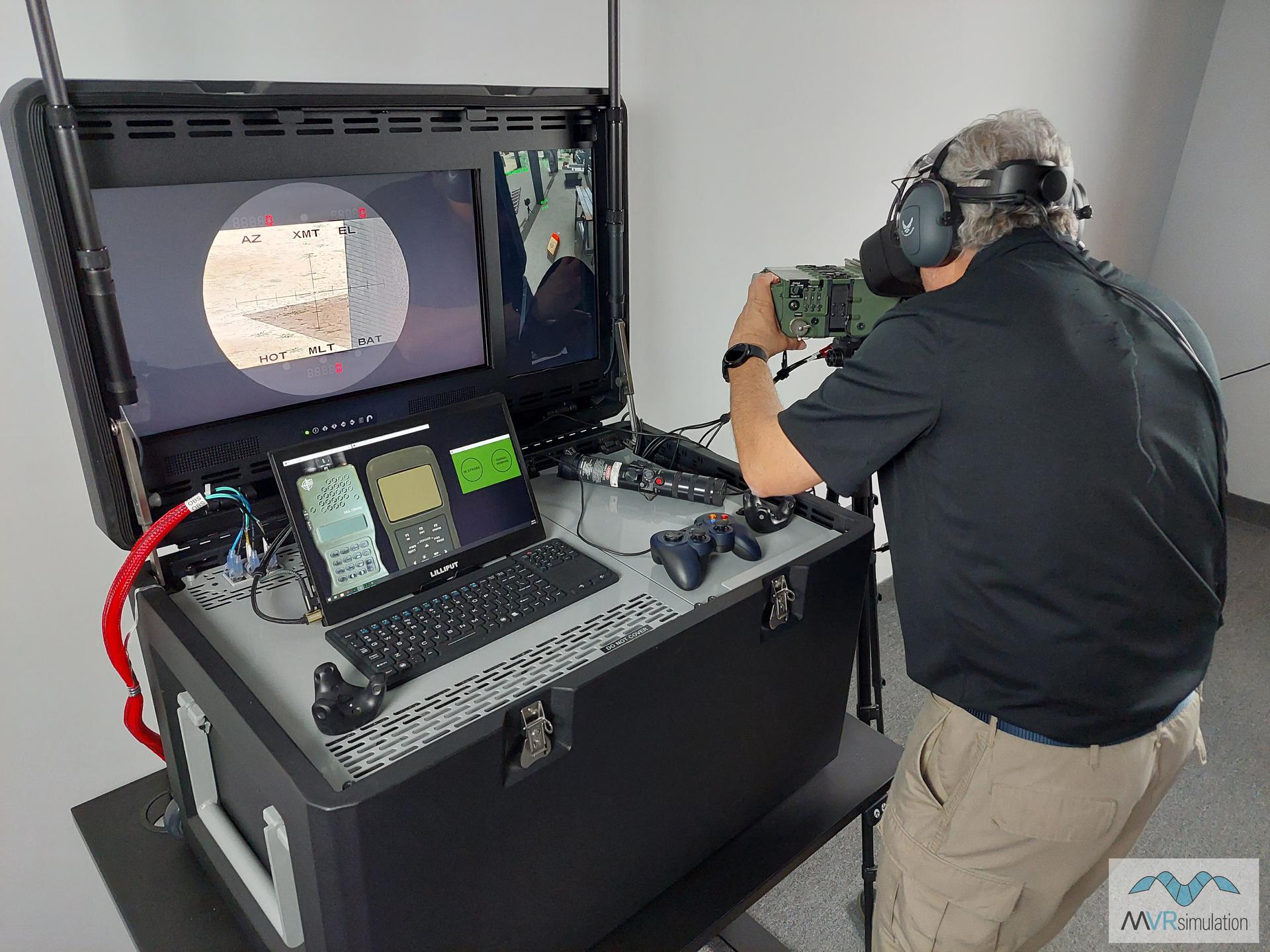
At the Observer Station wearing the Varjo HMD, looking through the emulated SOFLAM. See the wearer's view rendered in VRSG on the display.
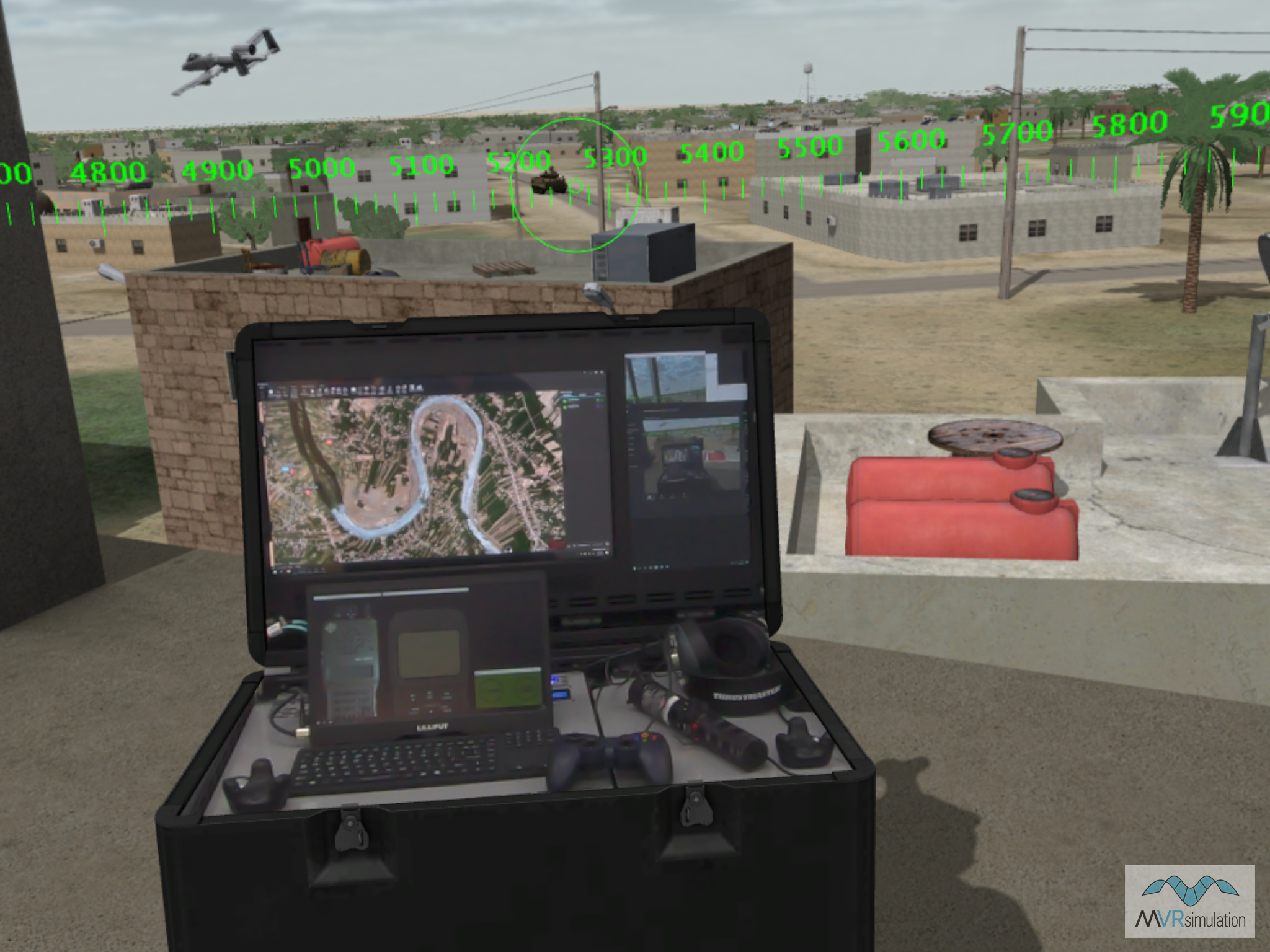
The JTAC's view inside the Varjo head mounted display showing pass-through of the real-world Observer Station, within VRSG.
Instructor Station
- Provides full dynamic control of the scenario included semi-automated platforms
- Has controls for UAS pod, 9 lines, 5 lines and Call For Fire
- Includes a terrain server that holds MVRsimulation’s round-earth VRSG terrain
- Communicate to all players via simulated radios
- Control constructive surface-to-surface fires, fixed- and rotary-wing assets
- Record current scenario to play back for after-action review (AAR)
- The networked DJFT supports Remote Simulator Instruction (RSI) efforts, enabling instructors who are not geographically located with their students to port-in and provide instruction remotely, rather than needing to be co-located.
- Internal DISA-approved networking for interoperability
- Connect into existing simulators for joint training
- Supports LVC training
- MVRsimulation's Portable Joint Fires Trainer (PJFT) IOS Backpack can join scenarios as fully-networked additional instructor stations (available seperately)
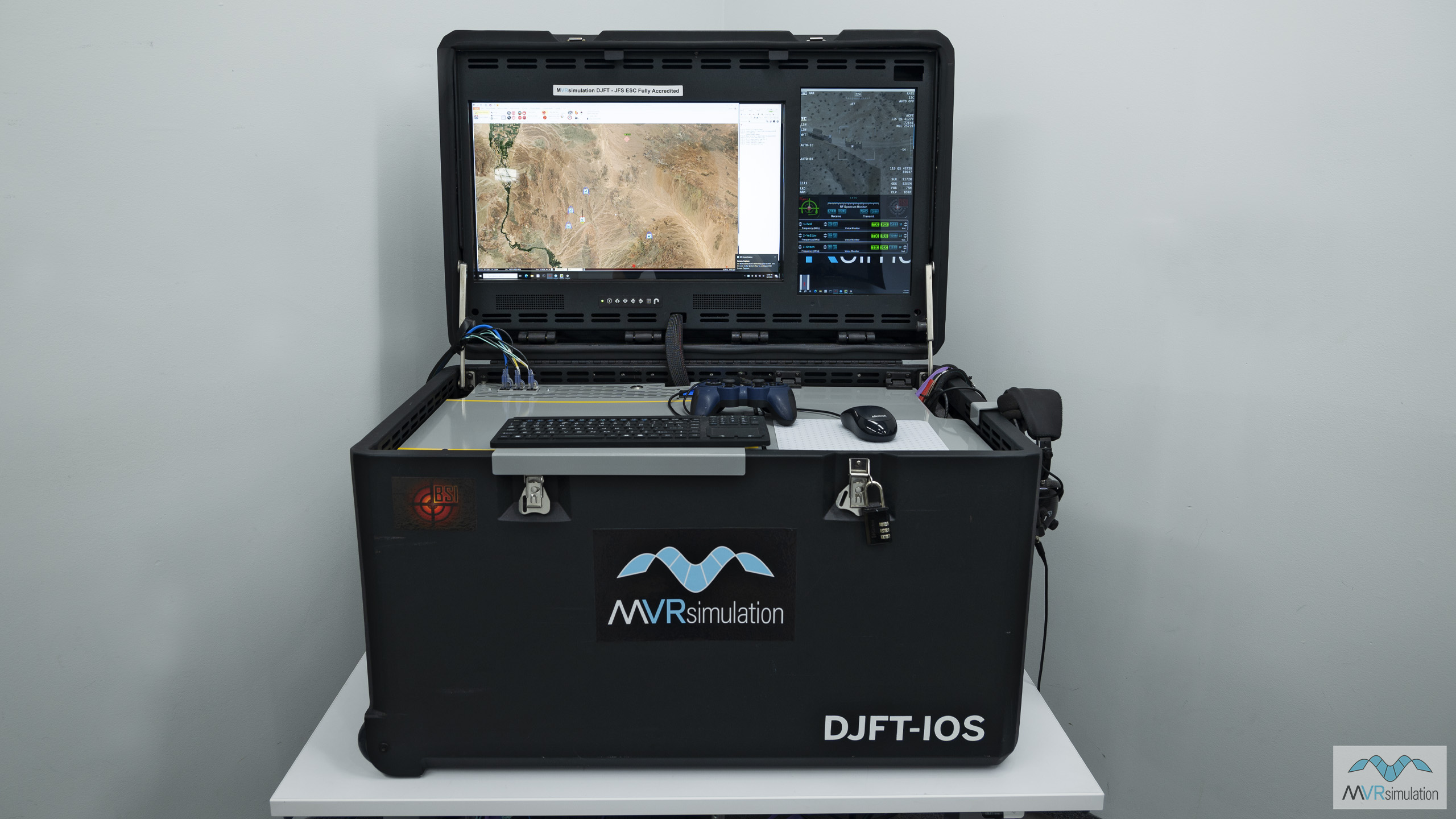
The Instructor Operator Station provides full dynamic control of the training scenario.
Role Player Station
- Dedicated to controlling fixed-wing, rotary-wing, and RPAS assets in the mission
- Fully interoperable with US Air Force MALET-JSIL Aircrew Trainer (MJAT)
- Trainee immersed in training scenario via the Thrustmaster HOTAS
- Communicate with all players as aircrew via simulated radios
- Control assets manually with HOTAS controls or by using 9 lines and 5 lines
- Control targeting pod, enabling video downlink for student to conduct sensor pod talk-ons
- Add additional Role Player stations to support specific user training requirements
- MVRsimulation’s fixed-wing Part Task Mission Trainer (PTMT) can join the scenario as an additional aircrew role player (available separately)
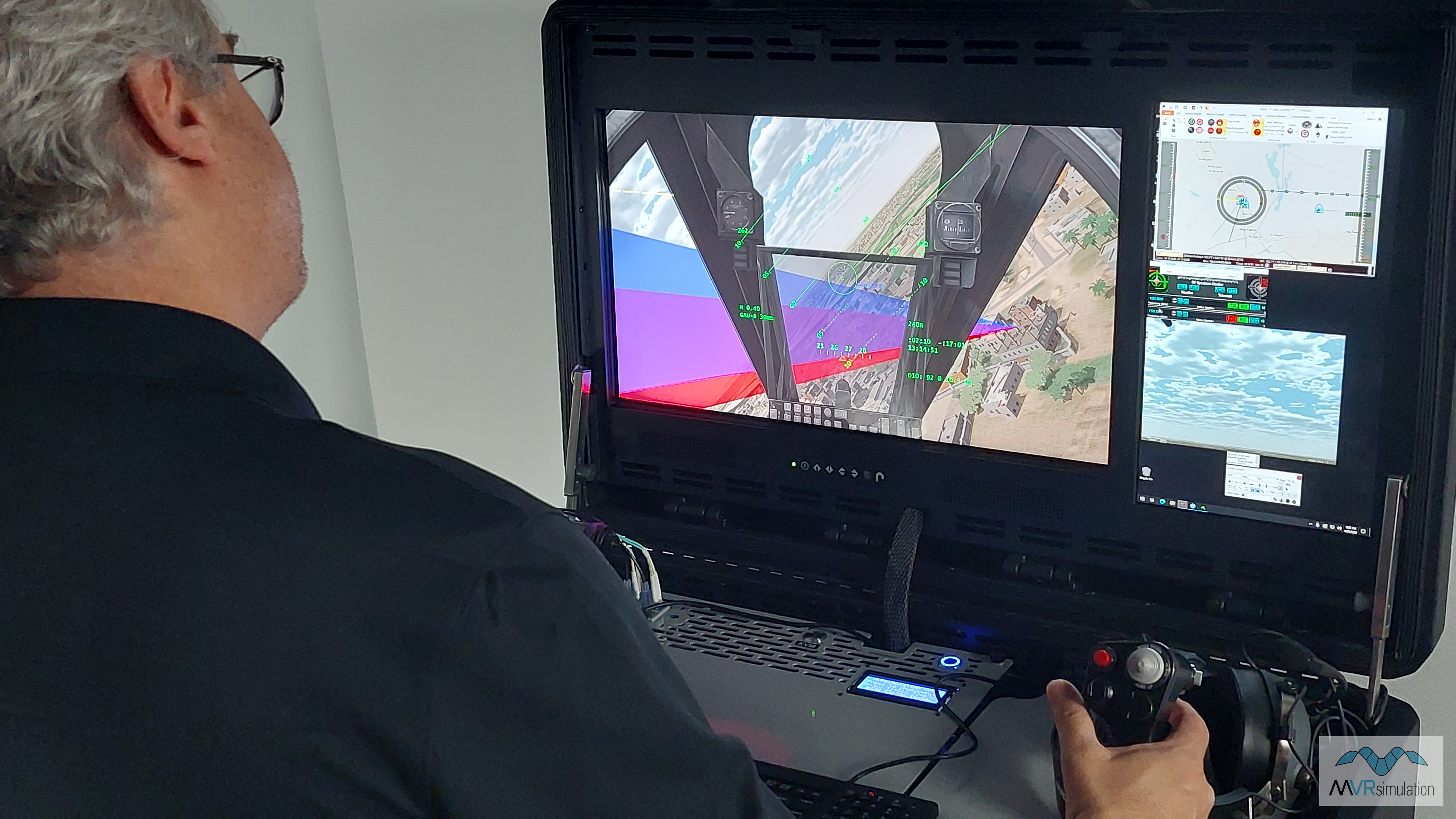
Role Player Station showing aircrew view and JTAC's eye-gaze captured by the Varjo mixed-reality HMD and rendered in VRSG.
Modular, Reconfigurable, Transportable
- Self-contained and cased in two-man deployable welded aluminum cases
- Train anywhere from a classroom, to a forward operating base or hotel conference room at short notice
- Three stations allow full spectrum JTAC/joint fires training; or add more stations to support your site’s specific needs
- Swappable hard drives support different classification zones (additional drive sets available seperately)
- Windows 10-based high-end gaming systems comprised of COTS components including NVIDIA RTX6000 ADA graphics cards and designed to be upgradable as technology advances
- Single-source power control for simple start-up. Can be run on 100-240 volt and 50-60 hz. power outlets. Easily update power cord for geospecific outlets
- Stations are networked via internal 10-Gigabit Ethernet switches
- Case size: 21” x 21.5” x 33.75”
- The DJFT is air freight transportable
- No Wi-Fi or Bluetooth for use in secure environments
Fully accredited simulator
- Meets the Joint Fires Support Executive Steering Committee (JFS ESC) Memorandum of Agreement (MOA) accreditation for Type 1, 2, 3, day, night, and laser controls
- 360 degree FOV throughout the entire mission including during the terminal phase of the control to assess the aircraft attack geometry
- Integrated form-fit-function laser target designator for laser accreditation
- Environmental sound and headset radios for communications with push-to-talk capabilities
- Observer can read and write without having to remove the HMD
- ATAK/WinTak integration ready for Digitally Aided Close Air Support (DACAS)
- Uses software currently in-use and accredited with Progams of Record including:
- Joint Terminal Control Training Rehearsal System (JTC TRS)
- Air Force Special Operations Command (AFSOC) Joint Terminal Attack Controller (JTAC) system
- Advanced JTAC Training System (AJTS)
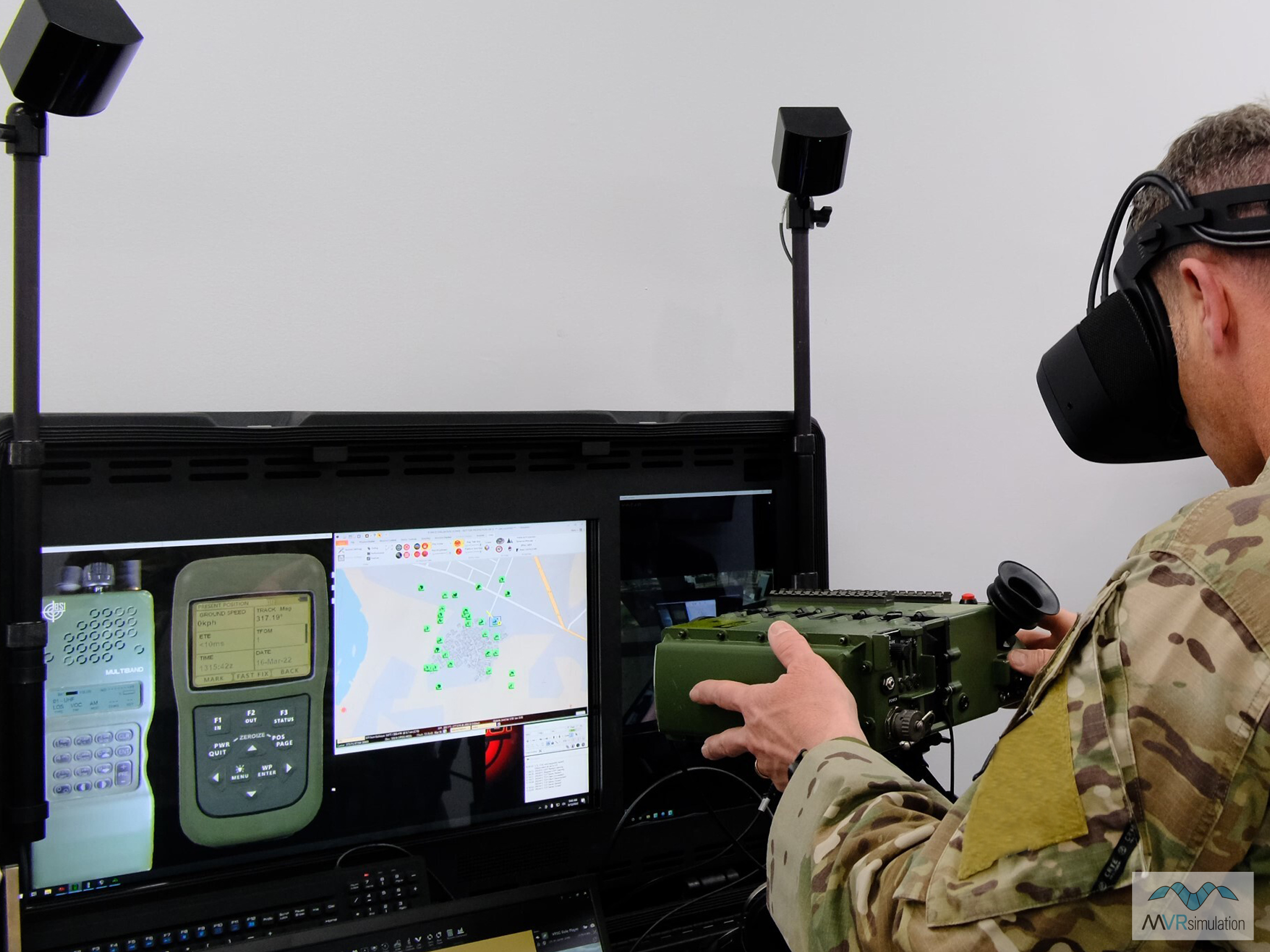
BSI's emulated AN/PRC-152 radio and emulated advanced GPS receiver.
Head-Mounted display support
Integrated Varjo XR series head mounted display allows the user to be fully immersed in the virtual world while interacting with emulated physical LTD and IZLID in the real world.
- Ultra-low latency, dual 12-megapixel video pass-through allows the user to be able to read and write without having to remove the headset
- VRSG tracks the observer’s head position and pupil location. Eye-track is exported via DIS and can be seen in real-time and saved to a PDU log for after action review (AAR)
- Provides 360 x 360 FOV displays, enabling a fully immersive training environment to conduct Type 1 controls
- Simulates binocular function with discrete levels of magnification, removing the need for separate emulated physical binocular hardware.
Base HMD can be changed upon request; support for multiple HMD available.
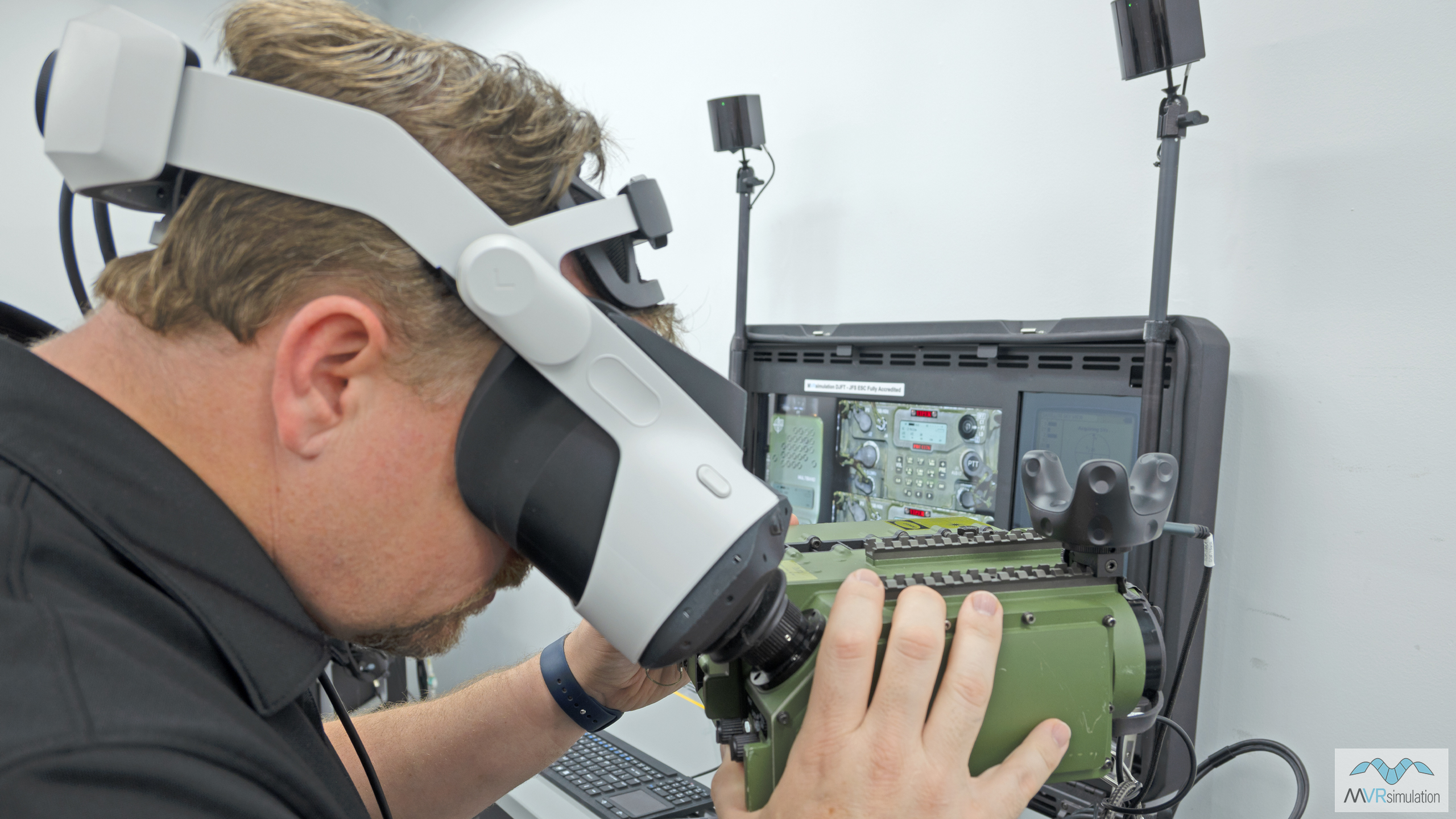
Trainee at the DJFT Observer Station wearing Varjo XR-4 HMD.
Communications headset
- Audio/mic headset designed to emulate military grade communication headsets, with required JTAC/FO mission functionality
- Integrated USB push-to-talk (PTT)
- Integrated talk-through technology, allowing the headset wearer to retain the ability to hear what is being said in the training room by others not equipped with radios
- Switch activated isolation of the Observer trainee, allowing the Instructor and Role Player to communicate about the training scenario without the Observer being party to the conversation
- Lightweight and comfort padding to reduce wearer fatigue
- Equipped with protein leather ear seals (gel, foam, gel + foam ear seals also available)
- Designed and built by Dalcomm Tech LLC in Connecticut, U.S.
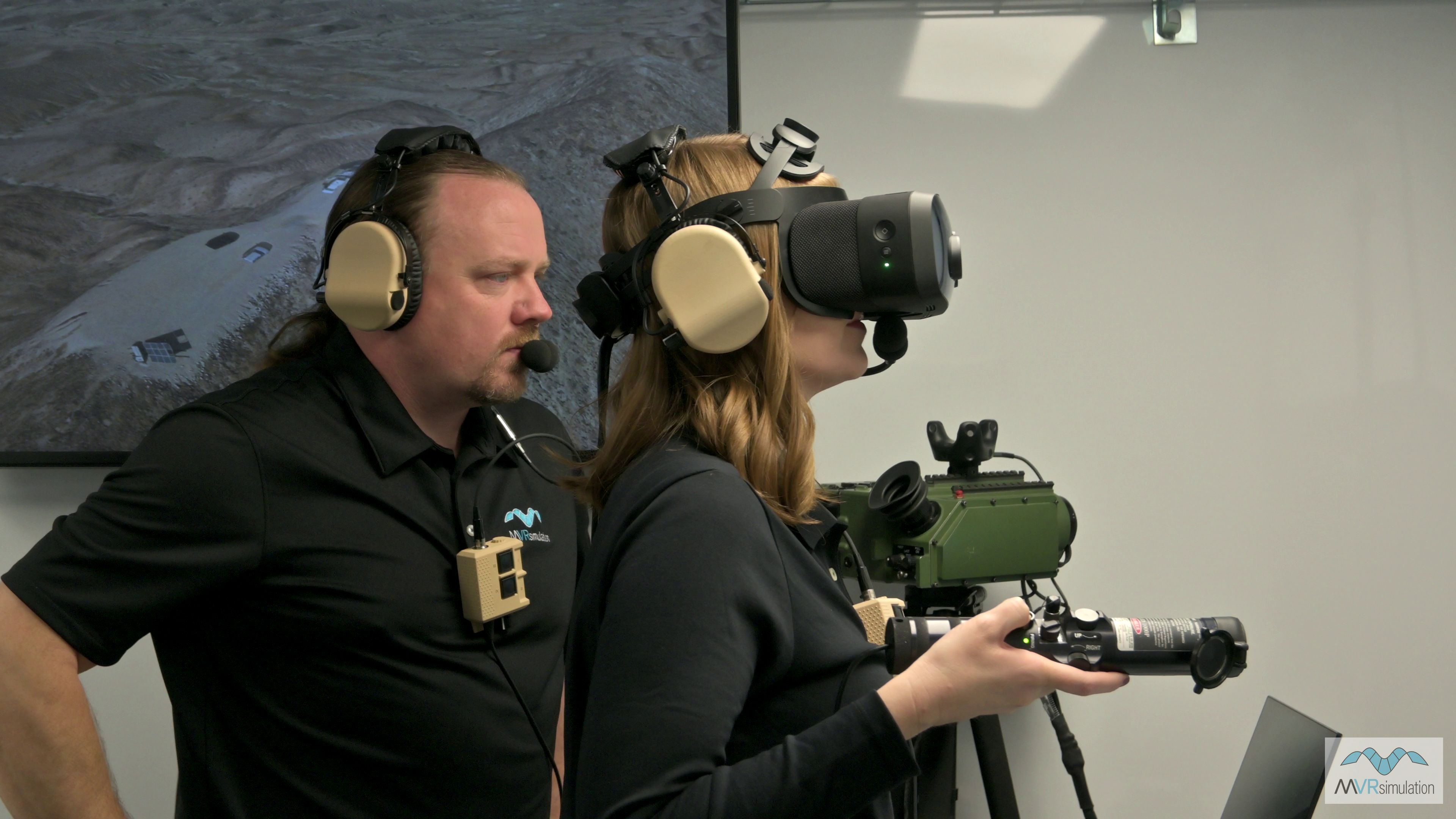
Audio/mic headset designed to emulate military grade communication headsets.
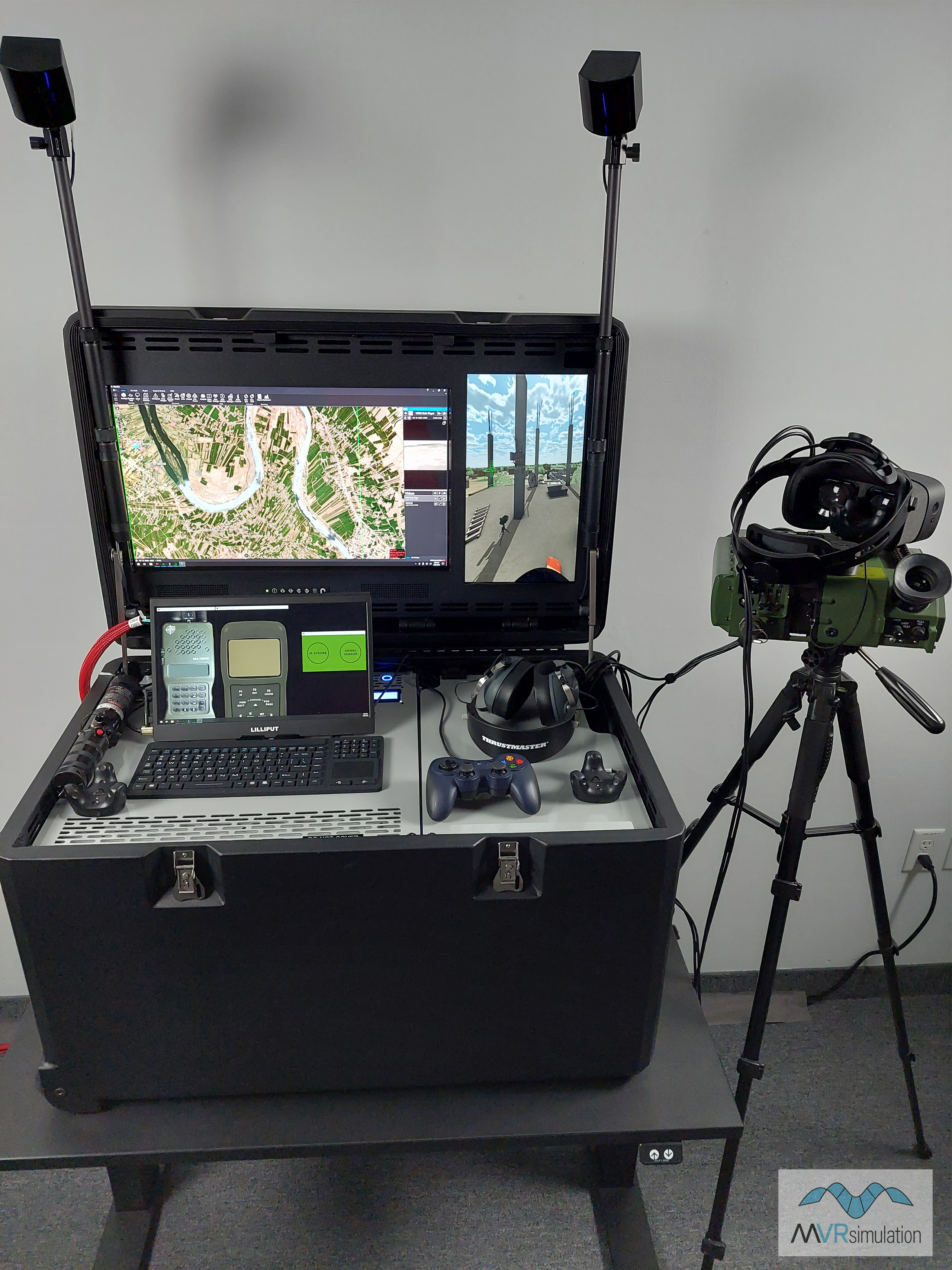
Each DJFT station is self-contained and cased in two-person portable welded aluminum case.
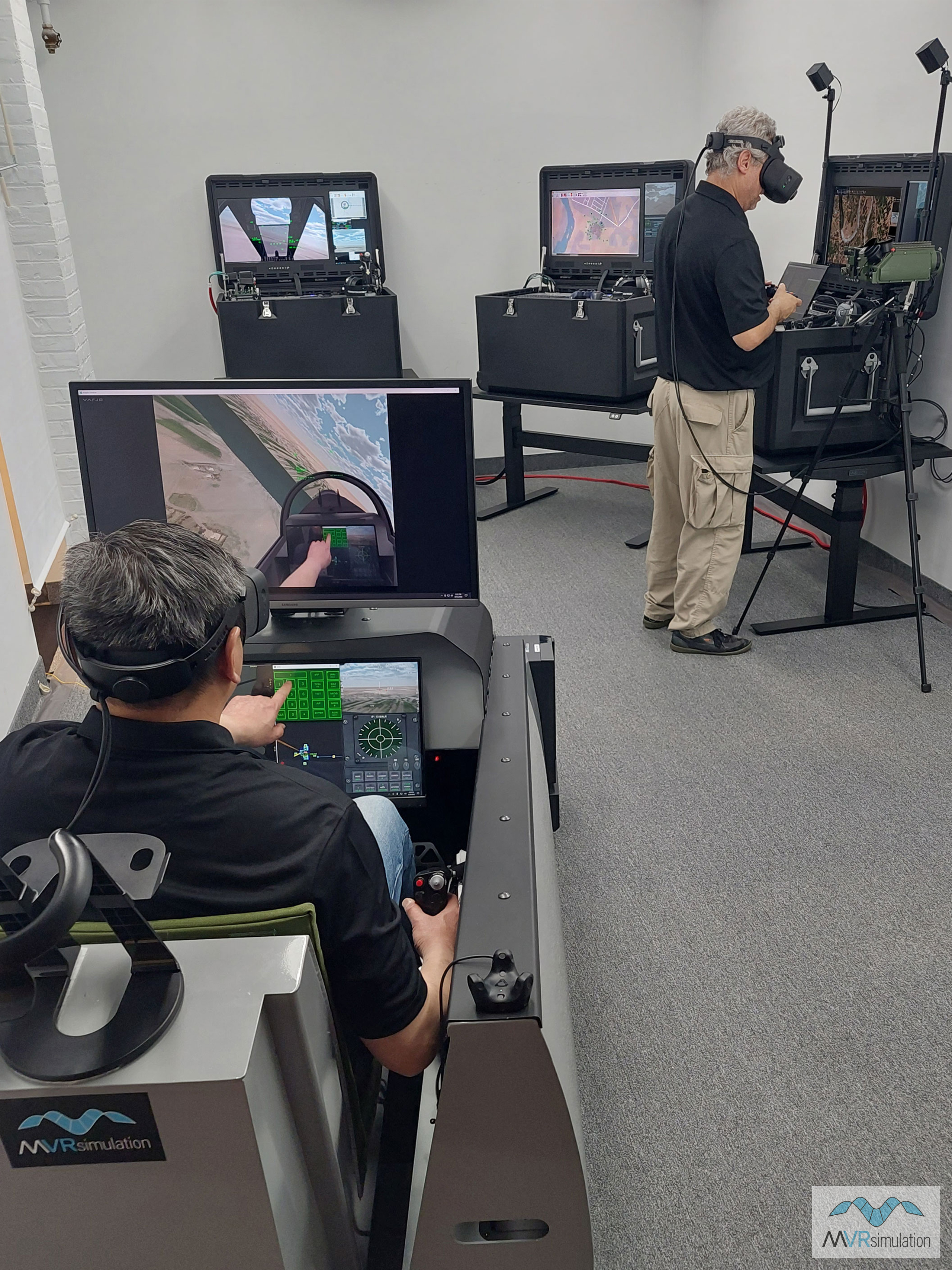
MVRsimulation's PTMT can join DJFT training scenarios as a fully-networked additional role player.
MVRsimulation is the sole source manufacturer and provider of the MVRsimulation Deployable Joint Fires Trainer (DJFT) hardware training product, and of VRSG, Scenario Editor, and Terrain Tools software. MVRsimulation does not make its software or hardware available through commercial resellers. In certain circumstances, the transfer of a software license can be made, in accordance with our Software License Agreement.
MVRsimulation maintains a "Best Pricing" policy by offering the same price for a software license or hardware to all customers: US Government, commercial, and international.
Click here for a PDF datasheet with the latest DJFT specifications and pricing including individual case pricing. To order the DJFT, see the price list and request for quote form.

